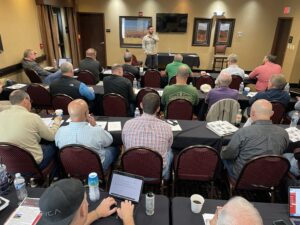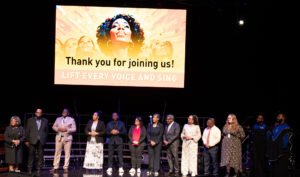
GLORIETA, N.M. (BP)–Despite the growing popularity of homeschooling, misconceptions abound about families who educate their children at home, according to a speaker Aug. 18 at Glorieta (N.M.) Baptist Conference Center.
Bruce Merrick, assistant professor of Christian education at Midwestern Baptist Theological Seminary, Kansas City, Mo., spoke on the topic, Shattering the Myths of Home Education, during Glorieta Homeschool ’97: Reaching New Heights.
He listed five common myths about homeschooling:
— Only “backlanders and misfits” choose homeschooling. To the contrary, Merrick said, homeschooling parents come from a variety of professions, including education, law, agriculture and other vocational areas.
Merrick cited several statistics indicating homeschooling is on the rise. One set of government figures indicated the number of children being educated at home rose from 300,000 in 1991 to 1.3 million in 1996.
“But all of these statistics are somewhat suspect,” Merrick acknowledged. “Most homeschool families don’t cooperate real well with government surveys. … The number is maybe as much as 50 percent higher.”
— Parents can’t teach as well as trained teachers. Merrick said the quality of academic results is often better than in public schools, which produce many graduates with poor verbal skills.
“Studies suggest that parents can do in two hours a day what it takes a school system an uncertain six hours to achieve,” he stated. “One of the reasons homeschool kids do so well on tests is because they know how to think analytically.
“We think that learning how to study and to reason can be better taught in a home environment by a parent … who is working with that student one-on-one.”
— Homeschooled children suffer from isolation and a lack of socialization. “This is the most foolish and outlandish myth of all,” Merrick declared. “Just the opposite is true.”
He said there are “tons of research” that indicate children educated at home score significantly higher in the area of self-esteem than children from public schools.
Homeschool families also take advantage of numerous community activities, including Scouts and classes in the fine arts or physical fitness, Merrick said.
“We just opt to do that with our kids, more so than others many times, because we like to use that as part of our curriculum,” he explained. “They socialize with other kids in those groups.”
Merrick disputed the notion that children should be educated with peers who are their own precise age.
“It’s not natural. … How much of your life do you spend working with people exactly your own age? We don’t even do that in Sunday school classes. We’re still in a broad age group,” he said.
In fact, the modern American public school system — with its strict and narrow age-grading — is a recent innovation, Merrick said.
He praised the “prairie schoolhouse” of years gone by where one teacher taught a wide range of ages from small children to older teenagers. “That’s the kind of school system America was built around, until just recently.”
— Homeschooled children don’t do as well academically as their public school counterparts. But Merrick said this myth is countered by more than 65 studies that have concluded homeschoolers performed either average or above average.
In the 1994 Iowa Test of Basic Skills battery scores, 16,000 homeschool students achieved an average score in the 77th percentile, which Merrick termed a “remarkable achievement.”
— Homeschooled children can’t go to college or get a good job. Merrick said more than half of children educated at home attend college, almost exactly the same percentage as public school students.
Schools such as Harvard, the University of California at Berkeley and the Massachusetts Institute of Technology have admitted homeschooled student, Merrick said. “College admissions officers now recruit at homeschool conventions and conferences.”
Regarding employment prospects, Merrick said a recent study found two-thirds of adults who were homeschooled as children “are self-employed, suggesting a higher level of economy and independence.
“They’ve just got their act together. They’re aggressive. They’re creative. They’re not afraid to take risks. … Ninety-six percent said they would do it again.”













